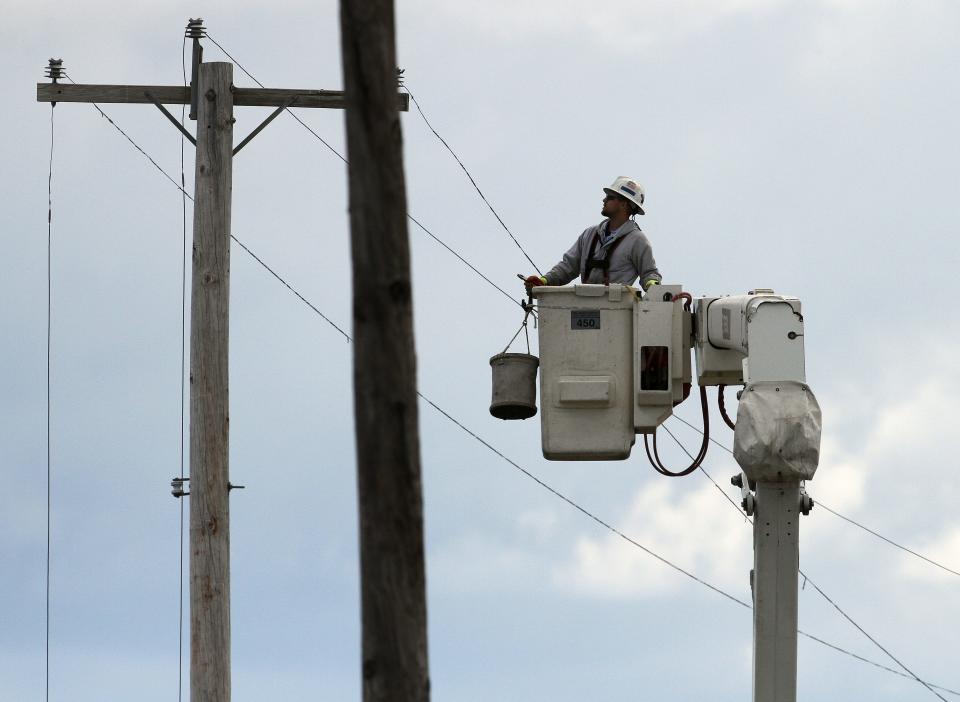Bundle up: RI electric bills will rise 25% this winter due to rate increase
Electric rates for most Rhode Islanders come Oct. 1 will climb nearly to last winter’s record levels, after state regulators approved a proposal put forward by the state’s largest energy utility.
Under the plan unanimously approved by the Public Utilities Commission, customers who buy their power from Rhode Island Energy will see a 25% increase in their monthly bills. The bill for a typical household that uses 500 kilowatts hours a month will go up $33, to about $167, when smaller changes to surcharges are also factored in.
The increase is due to higher costs for energy (as opposed to delivery), which Rhode Island Energy passes on to ratepayers without a markup. At Tuesday’s commission meeting, chairman Ronald Gerwatowski pointed to larger market forces he said are behind such a significant hike in winter rates for the second year in a row.

Higher electricity rates driven by cost of natural gas
Rates across the regional New England electric grid are largely driven by the wholesale costs of natural gas, a primary fuel for power generation as well as heating. Market prices fall in the summer, when demand for gas ebbs and increase in the winter when residences and businesses need the fuel for heat. Because of constraints on the region’s pipeline network, prices over the last decade have tended to spike when the temperature drops.
The price swing was more dramatic than usual last winter because the war in Ukraine and inflation pushed up global demand for gas. Rhode Islanders saw smaller increases than customers in Massachusetts and other states in the region because state law requires Rhode Island Energy to stagger energy purchases over a year and a half. But the residential rate in Rhode Island still reached 17.8 cents a kilowatt hour, the highest on record in the state.
Even though wholesale prices have come down, the laddered approach to procurements means that rates haven’t followed in linear fashion. So the rate in effect from Oct. 1 to March 31 will be 17.7 cents a kilowatt hour.
“Until the region substantially reduces its reliance on natural gas generation, we are going to continue to see the cycle of low prices that span the six-month period over the summer followed by a spike in electricity prices for the six-month period that spans the winter,” Gerwatowski said.
More: RI electricity customers once again ask regulators to reject proposed winter rate increase
Could renewable energy bring rates down?
Things may change as more renewable energy comes online and eases the region’s dependence on fossil fuels that are subject to price volatility. Offshore wind, in particular, it’s believed, will help in the winter because the winds blow strongest and steadiest in the colder-weather months. But the cycle is expected to continue for the foreseeable future.
“It’s an inescapable reality over the next three to five years and potentially longer that this pattern is likely to repeat itself again and again,” Gerwatowski said.
Electricity increases will impact those with aggregation plans too
The rate change affects about 70% of Rhode Island’s Energy’s electric customers. The new rates won’t affect customers who use competitive suppliers, including residents of the seven cities and towns that have electric aggregation plans.
On Tuesday, the company that supplies those communities – Narragansett, Newport, Portsmouth, South Kingstown, Barrington, Providence and Central Falls – announced winter rates going into effect Nov. 1 that will start at 17.4 cents a kilowatt hour. The standard rate uses 5% more renewable energy than Rhode Island Energy. Customers can opt in to use more at a higher price.
Low-income Rhode Islanders will get some help with winter bills
Ratepayers will see some relief under a provision in the state budget that suspends the 4% gross earnings tax on electric and natural gas bills this winter. It would save the typical electric customer $6.70 a month between December and March.
The McKee administration is also channeling $3 million from a regional cap-and-trade program for power plant emissions to Rhode Island Energy's low-income electric customers. They will receive a $27 credit on each of the bills for December, January and February.
During a hearing earlier this month on the rate hike, advocates called on Rhode Island Energy to absorb the $114-million cost of the rate increase. (To put that number in perspective, the company made a $52-million profit last year.)
Gerwatowski on Tuesday said that regulators have no authority under the law to force the company to do so – if it’s working in accordance with the agreed-upon procurement plan.
“As long as the utility complies with the plan, it can recover the cost,” Gerwatowski. “The language of that law is clear and unambiguous.”
This article originally appeared on The Providence Journal: Rhode Island electricity bills to go up 25% this winter

